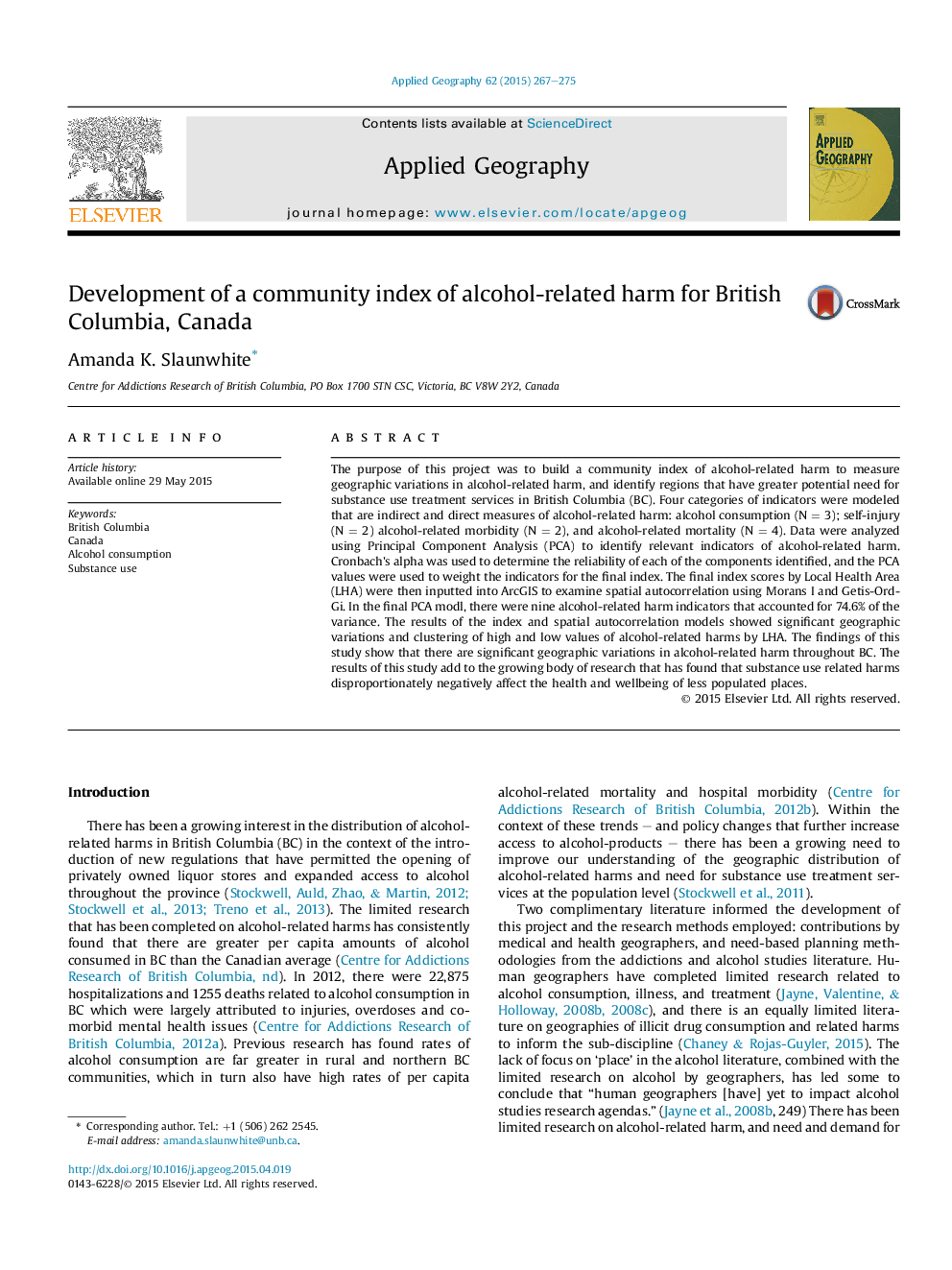| Article ID | Journal | Published Year | Pages | File Type |
|---|---|---|---|---|
| 6538514 | Applied Geography | 2015 | 9 Pages |
Abstract
The purpose of this project was to build a community index of alcohol-related harm to measure geographic variations in alcohol-related harm, and identify regions that have greater potential need for substance use treatment services in British Columbia (BC). Four categories of indicators were modeled that are indirect and direct measures of alcohol-related harm: alcohol consumption (NÂ =Â 3); self-injury (NÂ =Â 2) alcohol-related morbidity (NÂ =Â 2), and alcohol-related mortality (NÂ =Â 4). Data were analyzed using Principal Component Analysis (PCA) to identify relevant indicators of alcohol-related harm. Cronbach's alpha was used to determine the reliability of each of the components identified, and the PCA values were used to weight the indicators for the final index. The final index scores by Local Health Area (LHA) were then inputted into ArcGIS to examine spatial autocorrelation using Morans I and Getis-Ord-Gi. In the final PCA modl, there were nine alcohol-related harm indicators that accounted for 74.6% of the variance. The results of the index and spatial autocorrelation models showed significant geographic variations and clustering of high and low values of alcohol-related harms by LHA. The findings of this study show that there are significant geographic variations in alcohol-related harm throughout BC. The results of this study add to the growing body of research that has found that substance use related harms disproportionately negatively affect the health and wellbeing of less populated places.
Related Topics
Life Sciences
Agricultural and Biological Sciences
Forestry
Authors
Amanda K. Slaunwhite,
